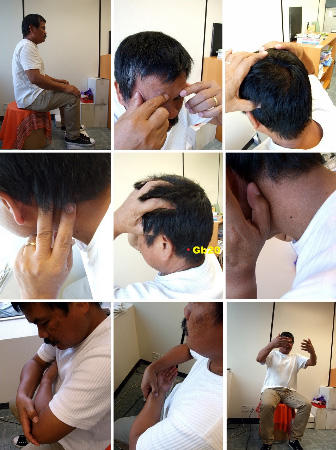Chinese Acupressure to Regulate Body and Reduce Blood Pressure
Blood pressure readings vary throughout the day, which usually show the lowest in the morning and then rise to a peak in the midafternoon. Blood pressure can go up and down a lot with daily activities too, e.g. exercise, changes in posture and even talking. Normally, blood pressure changes are temporary and will be back to normal shortly. However, when individuals have a history of hypertension, or their blood pressure is poorly controlled, the blood pressure fluctuations can be extreme. Even though your hypertension is controlled with proper medications, for the long term health, you should do more to keep the blood pressure changes in a healthy range. Many complementary and alternative therapies are designed for this purpose, and different people may have different health needs. Be open-minded and willing to experiment, you may find out many are right for you.
Acupressure therapy has thousand years of history, and is highly recommended as a form of health routine in traditional Chinese medicine (TCM). Therapists apply various manipulations on specific body regions, the stimulations act locally to promote blood circulation, remove stagnations, and restore impaired soft tissues. They also create signals to affect the transmission of fluids, qi (vital energy) and blood, and thus help regulate the internal organ functioning. Basically, Chinese acupressure uses the same principles as in acupuncture in providing relaxation, wellness and treatment.
Chinese acupressure can be incorporated as the self-care for hypertension, and is also favorable to those with a stressful living. Regular practice can see a long term improvement in stress and blood pressure levels. Acupressure in combination with the progressive relaxation qi-gong can even better. For hypertension individuals, below is a set of acupressure techniques that is suitable to do at home (see the graphics below for references):
- Preparations: close the eyes and sit quietly, the hands place on the knees, slight open the mouth and raise the tongue against the hard palate, inhale and exhale slowly and regularly; keep this for five to ten minutes for calming down.
- Enhancing vision: the thumbs place on the temple regions (Ex-Hn5); the index fingers press on the inner end of the eyebrows (Bl 2), and then knead outward and in circular motion. This helps promote vision.
- Soothing liver: the middle fingers press on the center of head vertex (Gv 20); the thumbs press on 1.5 inch above the tip of ears (Gb 8), and then knead back and forth horizontally. This helps soothe the liver, clear its fire, and ease discomforts in the head region.
- Arresting dizziness: the middle and index fingers press on the depressions below the occipital bone of the points (Gb 20) and (Bl 10) respectively, then make the two hands rub in opposite directions. This helps relieve dizziness, headache, distending feeling in the head and blurred vision.
- Refreshing mind: stretch out all the fingers, press on the front hairline and comb slowly toward the back, when reaching the back hairline, use the thumbs to knead at the point (Gb 20) in circular motion. This helps refresh the mind and also can relieve discomforts in the head region.
- Reducing blood pressure: slight tilt the head to left, put the palm side of left hand on the back of ear root, rub down along the angle of lower jaw; repeat in the other side. This helps to lower blood pressure and relive the accompanied symptoms.
- Clearing heat: bend the left elbow in right angle and keep its palm facing the abdomen; put the right thumb on the lateral end of the transverse cubital crease (Li 11) of left arm, and wipe back and forth; repeat in the other side. This helps soothe the liver and clear internal fire.
- Reinforcing heart: bend the left elbow in right angle, place on the abdomen and lift its palm upward, use the right thumb to press on the middle and 2-finger-breadth above the right wrist crease (Pc 6), knead back and forth; repeat on the other side. This helps reinforce the heart, and relive symptoms like stuffiness and shortness of breath.
- Regulating breath: slight extend the upper arms, place the hands on the thighs with palm side facing up and stretching out the fingers, inhale slowly and raise the hands to the eyebrow level at the same time, then exhale slowly and put the hands down to the navel level. This can improve respiratory function.
The above are very suitable for middle and elder people as well as hypertension individuals. It takes about 20 minutes to finish the steps every time. Pay special attention to the locations of the points, when kneading or pressing on them, there should be enough force to bring about numbness or soreness, while rubbing or wiping should create a feeling of warmth. Regular practice can expect a good result for your blood pressure and the general health too.



